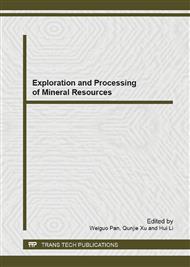p.459
p.465
p.473
p.477
p.481
p.487
p.497
p.503
p.510
The Numerical Simulation of the Pressure Buildup Process of Cavity Completion for CBM Wells
Abstract:
A numerical model is established to simulate gas injection with high pressure for CBM cave completion. The model is used with the discrete element simulation software UDEC and considers two kinds of fracture morphology exiting in coal bed face cleat and butt cleat. The effective stress of coal matrix, fluid pressure and vector distribution of calculation nodal displacement under the influence of crustal stress is studied as bottom-hole pressure increases. Results show that the model considering cleat system can simulate reservoir fluid migration and matrix deformation more accurately in the process of pressure buildup of cavity completion; the different fluid velocities caused by different directions of face cleat and butt cleat will induce shear fractures for coal bed; the development of coal reservoir extensional fractures can be known by calculating the vector distribution of nodal displacement; the anisotropic formation stresses will make the break and collapse of coal bed more easily.
Info:
Periodical:
Pages:
481-486
Citation:
Online since:
December 2013
Authors:
Price:
Сopyright:
© 2014 Trans Tech Publications Ltd. All Rights Reserved
Share:
Citation:


